#intisarabioto
Photo

Highlight reel from the @heydocclinic one year anniversary today for @doctor.montserrat 🙌🏽 . Shout out @emillygprado @vnprt and @freetillman for helping support the vibes of the day from the makeshift front desk dj booth! . Shout out all the homies, friends, all the providers, staff and new folks who came through to support the day as well including @randalwyattmusic @seetheking @sarahartwy @tomsollitt @thelakemerrittmonster @baraksteady @k80nguyen @g_lee42 #ChipMiller @akashaforthepeople @rastaroo @eeeweezie @confrontingthestorm @berlubakery @intisarabioto @linneasbg @power.to.the.pelvis @dr.carrie.hsia @lydiatate.aculand @alberta_qamar @madsdad67 and many more. So nice to share space with you all and catch up during the celebration! (at Portland, Oregon) https://www.instagram.com/p/CkphI75LKKh/?igshid=NGJjMDIxMWI=
0 notes
Photo








I've been writing about this mural for several weeks. There's so much about it that I've been trying to say. It's about us. And the history within it, I take that so seriously. Those words are still coming. Meanwhile a mural ...
BabeSis, Aunts Tenn, Ms. W, Miss Choomby ... & In Our company
.. is up on SE Grand & Ash in Portland OR.
This was made within sight of this deep feeling knowledge I have about Black girls’ sight and -self- visionary capacities. How these visions, these forms of sight, show themselves to us and how our sight-doing makes presents, pasts and futures.. fans out worlds of change. Plural. This is reference and instruction.
This work was made in sight of and in dedication to women and girls in my family. My mom is here, a sister, my aunties in Memphis, my family history is on this wall. My grandparents’ names are here .. and the story of my aunts, the seven Lee sisters, Black girls and young women, who together during the sit-in movement in Memphis in the 1960s were called the most arrested family in the country. These were Black girls - teaching a world that told them it did not want them - through their actions and bravery, their vision. Black girls, visionaries. And they still are today. I stand in the wake of their and so many Black girls’ visions. We all do. So this is in sight of them.
This is in sight of and in dedication to Black women and girls in Portland. Lameah, Black girl artist .. AnAkA, sister, angel, storyteller.. Joyce Harris, educator and founder of Portland’s groundbreaking Black Educational Center, Mama Makini .. Chabre Vickers .. Oregon Supreme Court Justice Adrienne Nelson.. artist and poet Renee Mitchell .. all those imaged here .. and all those not imaged but here nonetheless. There is something about the line of Black women’s presence here, something close and made and done and continuing. Some ongoing way of life that regards itself and builds with its heart steadily. There's an ongoing courage in and of Black girls, Black women, and Black femmes here - and everywhere - that holds itself in the midst of. I see you and been seeing you. There is something to us. This work feels close. And more words will be said.
I want to give deep thanks to the two Black women poets who said yes to my ask to open and close this mural with their words. The first night after we began mounting the images I stayed up all night with my brain open to everything .. and it said the mural needed words from a Black woman in Portland. And so from the title poem of Samiya Bashir’s 2017 work, her Oregon Book Award winning Field Theories ..
.. What is a thing of beauty/ if not us?..
A mirror cupped in the hand, these words tllt .. to catch .. and regard us .. ring-shining our lights right back to us. A gift. An illumination. Leading us imaginatively out of the mural, yet right back in. Saying .. here .. here .. here. Looking .. and gesturing towards our lookings. Written, painted as they are here, it is as much sight as seeing.
Thank you so much, Samiya.
And given to me framed by a dear friend, Nikky Finney's "Instruction, Final: To Brown Poets from Black Girl with Silver Leica" has become for me what I call a fairy god story or fairy god poem.
I felt - feel! - so seen by this poem and its title, not just my adult self but my Black girl photographer self, herself beginning to teach me at 14 what I was to know .. finding her own form of Instruction ..
and what her teaching still tells me, remembers me to me of our purpose and our ways. Our eyes - together - still opening, shutter still catching, still letting the light Black in.
Worlds open in the visual and vision-ing field.
Like these portraits, surfacing in the black, what emerges here?
Who sees Black girl image makers, teaching, learning, telling?
What do we feel-hear in that gleaning between vision and the image, feeling and photograph?
The language of “Instruction, Final: To Brown Poets from Black Girl with Silver Leica” sees me, specifically as a Black girl Black woman photographer as almost no other written language has. It calls me to me, speaks of Black girls and Black women’s vision-making .. world-telling .. Instruction .. photographic, visual spoken, told, felt, recounted, recalled, written, danced, passed up, lived, dreamed.. and more.. and otherwise.. always.
It tells me to “Be camera..” and my own “black-eyed aperture.”
It charges me to “Watch your language!”
Thank you, Ms. Finney!! Thank you for the Instruction.
I am ! still listening .. learning. We are always looking!
With the words of these Black women poets a living frame to these portraits was made and a truth said .. and I am so thankful. What a gift and excitement to have work set against the work of these poets. I am still not over it.
Thank you to my friend and poet Fork Burke, all the way in Switzerland, who when I emailed her at 4:23 AM on July 3rd asking “.. is quoting a poet in this way as an inscription/epigraph before a mural an acceptable or common practice?” responded within minutes.. !
“I think you need not question if it’s a common practice or not- it comes through you- it exists now.” ..
And so the vision.. the reach of process.. the reach of our care.
.. And so I reached out to Ms. Finney .. and ..and ..and..
Thank you, Fork!! We really be needing us. So this is also you.
Thank you to the Portland artists who saw this vision up with me. Thank you to Eatcho who reached out asking me to do this and whose heart and dedication was the fire that soldered the many pieces. Thank you for your care, lift, this spark! Thank you Gage of Forest For The Trees! Thanks for your kindness and care and steady through.. and the printing and the printing and more printing. Thank you for asking me, "Are you happy?" that evening working at the mural when I was trying to listen to myself and the work, to really hear it. Eatcho and Gage, thank you for listening to my vision .. for your encouragement and your teaching. Thank you Matt! of FFTT for all your support. Thank you Ash Street Projects for hosting the mural. Thank you to Alex Chiu, Jeff Sheridan, Buckley, Jon Stommel .. artists in community who came through to paint, fix, wheat paste, and encourage. Thank y'all for your care in this process and bringing me into this mural life. It's a wonder. Thank you to all.
And ... ! *Miss Choomby is from Margaret Walker’s “For My People.” .. so thanks always to her.
Long the line!
Love,
Intisar Abioto
#theblackportlanders#forestforthetreesnw#fieldtheories#samiyabashir#nickyfinney#eatcho#Portland Oregon#intisarabioto
12 notes
·
View notes
Photo

When you work on a project as long and hard as Kayla, Ashley, and I have, you can't help but be bound together forever. I couldn't have ask for better people to work with. Thank you again so much, @banks.movement, for bringing us together. Shout out to the OG crew @celestecamfield and @crk_frk . You two were there from the beginning and the impact you made on this project was irreplaceable and could never be replicated. 📷 work by #intisarabioto https://www.instagram.com/p/Bx5ngqshJgK/?igshid=58f847vakr3m
0 notes
Photo

#Repost @festac77archive (@get_repost) ・・・ Posted @withrepost • @intisarabioto Studio visit today with one of our greats here, Adriene Cruz. She had this fabric calendar from FESTAC '77 up. Has had it since '77. Asked her about it and told her I knew and have continuously run into a photographer who shot at FESTAC .. some of everywhere .. in Florence, Johannesburg, New Orleans - ... And she said Marilyn Nance/ @sistanance ? And I said "Yes!" And then she mentioned Valerie Maynard and I said, "Yes!" because I have seen her and photographed her too. And she began to say how Maynard was one of her mentors back in New York and .. and one of the first to encourage her to branch out into other forms.. and.. and .. and. Well... #blackwomenartists #blackartistsoforegon #adrienecruz #valeriemaynard #marilynnance #festac77 #iamblackandproud #longliveafrica https://ift.tt/2MzdlPg Follow #ADPhD on IG: @afrxdiasporaphd
3 notes
·
View notes
Photo

Grand Opening 🎉@oriartgallery tonight from 6-10pm!!! • Elements of Reclamation with @brownivyx @mayavivas @lisanicolejarrett #sidonyoneal #intisarabioto • Must See First Thursday
0 notes
Photo

#Repost @mercatuspdx ・・・ If you're not following the recent trend of popular boxed-based subscription services, you need to check out @greenbox_pdx and their custom and curated cannabis box delivery, this weekend! Owner, Adrian Wayman shares, "When it comes to cannabis...people go through a lot of trial and error just to feel good, so if I can help you...let's do it!" Check out Wayman's story and how he created "the first of its kind in boxed-based subscription services here in #Portland." Full story in the link in our bio.⠀ ⠀ Written by @theartspj. Photos by @intisarabioto⠀ #blackhistorymonth #blackexcellence #blackownedbusiness #elevateandconnect #mercatuscollective #portlandcannabis ##blackincannabis #cannabisdelivery #portland #oregon #GreenBoxPDX #gbpdx Do not operate heavy machinery while under the influence of this drug. For use by adults 21 years of age or older. Keep out of reach of children. For use by adults 21 years of age or older. ⠀ ⠀ (at Portland, Oregon) https://www.instagram.com/p/BuM3VxBBgeP/?utm_source=ig_tumblr_share&igshid=1qhod62xhg4d0
#repost#portland#blackhistorymonth#blackexcellence#blackownedbusiness#elevateandconnect#mercatuscollective#portlandcannabis#blackincannabis#cannabisdelivery#oregon#greenboxpdx#gbpdx
0 notes
Photo

Black Portlanders, Black Portland exhibit reception: you can check it out all month at the Littman Gallery which is inside Portland State University Smith Memorial Student Union on the 2nd floor. @intisarabioto is an amazing artist and she has captured so much of Black Portland in her exhibit which tends to go unseen in “The Whitest City in America” according to the Atlantic. Tonight the reception is from 6-8pm. 🙌🏼🎶😍📸🎥 (at Smith Memorial Student Union)
0 notes
Photo

My fave pics from The Black by @intisarabioto, a series of photos she's taken while traveling across the world to meet, speak with and photograph Black people (at University of Oregon White Box)
0 notes
Photo


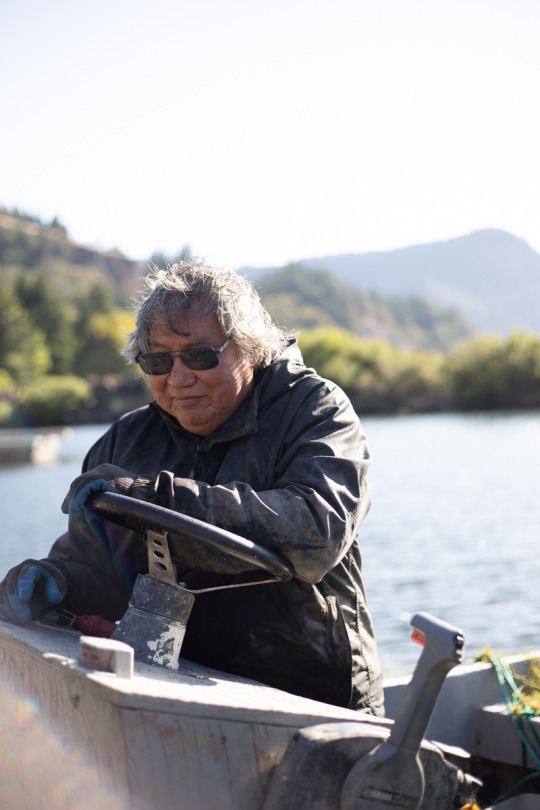
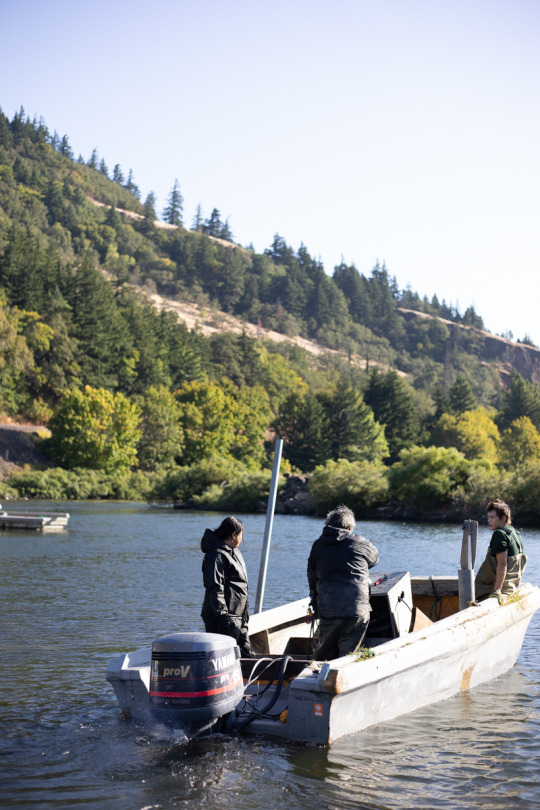
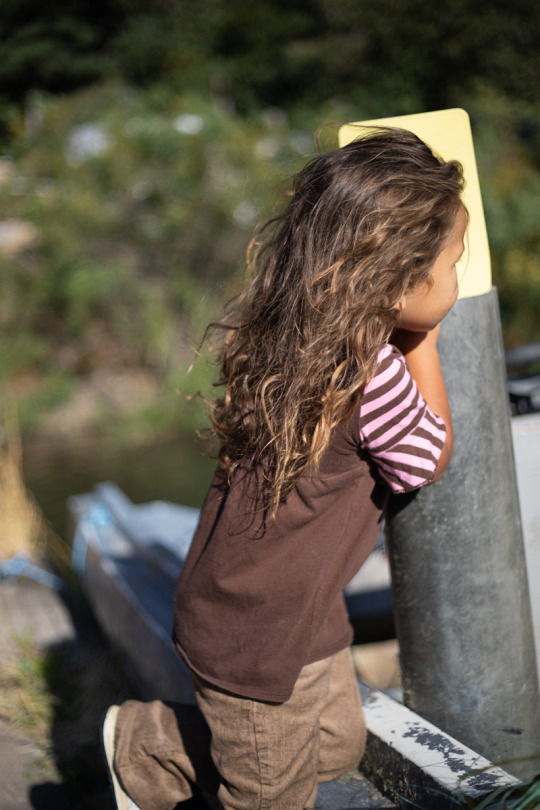
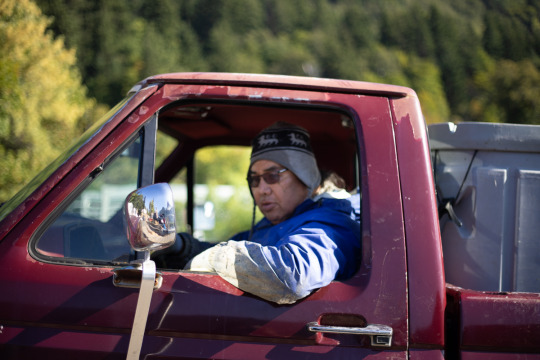
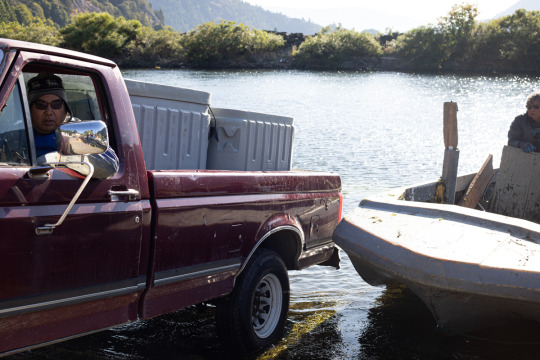
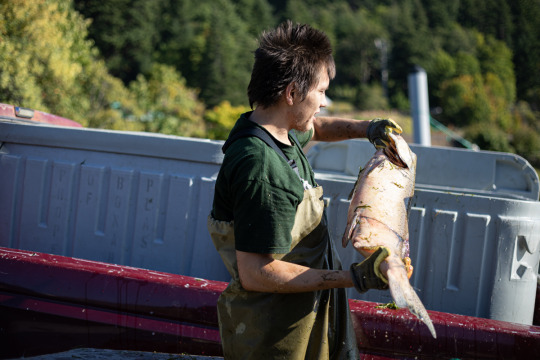

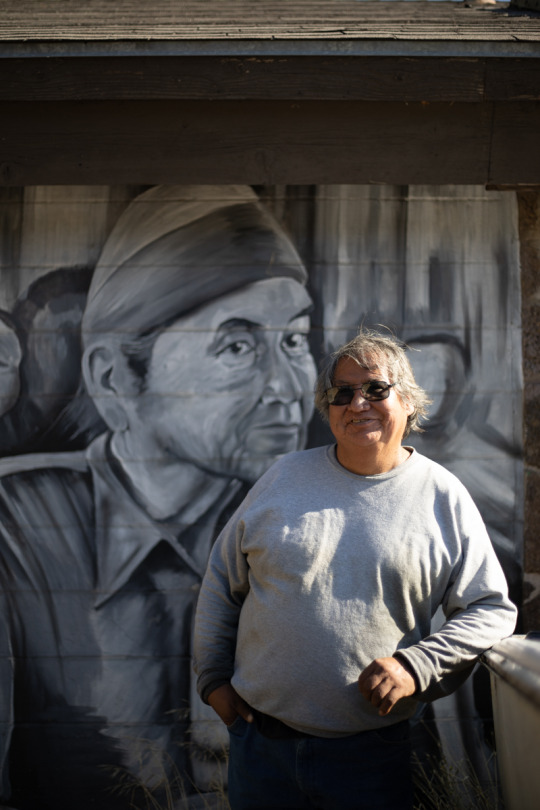
Well, hmmm, yes. These are not Black Portlanders.
On the morning of August 28th I drove out with my sister Kalimah Abioto to Cooks Landing on the Washington side of the Columbia River to meet with Yakama Nation activist, historian, writer, and poet Emily Washines. My goal was to contribute photographs for a piece on Yakama Nation fishing practices and the Sohappy v Smith case.
This week the piece, “Fish Warriors”, was published at Cascadia Magazine. I will leave it to you all to read and engage this history as written by Emily Washines. Please take the time.
An excerpt from “Fish Warriors” as written by Emily Washines ..
“The details of the civil rights struggle for treaty fishing rights, as well as life on the river for tribes today remains little known to many non-native people. For example, the 14 Yakama fishers who went to court in federal fishing cases beginning in 1968 are rarely referenced by name, even when the Columbia River tribes talk about the contemporary fishing rights movement. This year marks the fiftieth anniversary of a complicated court victory involving federal, tribal, and state management of fish. Those 14 fishers were cited for fishing out of the “official” state season at various sites on the Columbia River, including the place we are fishing today.
These are the names of those involved in Sohappy v. Smith: Richard Sohappy, Aleck Sohappy, David Sohappy, Myra Sohappy (David and Andy’s mother), Clara Sohappy, James Alexander, James Alexander. Jr., Leo Alexander, Clifford Alexander, Henry Alexander, Andrew Jackson, Roy Watlamet, Shirley McConville, and Clarence Tahkeal. For the purposes of the case, they are collectively known as the Yakama Fishers, with David Sohappy Sr. also identifying with his Wanapum lineage.
In 1968, the fishers were tired of the state trying to assert authority over treaty fishing rights and so challenged them in an act of civil disobedience. In 1969, a federal court in Oregon ruled in favor of the Yakama fishers and reaffirmed tribes’ treaty rights to fish in the “usual and accustomed places” they had frequented on the Columbia River for millennia.”
... I want to thank Emily Washines and David Sohappy Jr. for being open to having me in this space. I also want to thank the other fishermen and fisherwomen I briefly met, engaged with, and photographed in the few hours I was at Cooks Landing.
I first learned some about the history of the Columbia River Tribes in 2016 through a piece written Molly Harbager at the Oregonian. That story detailed the displacement of the Columbia River Tribes for the Bonneville, Dalles, and John Day dams. To this day the dams generate 40% of the state’s electricity. I was deeply affected by learning this history. I am not from the Pacific Northwest. I’m a Black woman of African descent originally from Memphis TN. Because of, not in spite of my identity and history, it became deeply important to me to figure out some way that I could healthily contribute in ways that might directly be of service, as defined by people coming from Pacific Northwest based Indigenous history and lineage.
I know that storytellers can have power. I know that the person who has the podium, wields the pen, or the camera can wield a power.
For me it became, and still is, a working question of how to healthily contribute to the work, human, and civil rights struggles of communities of which you are not a part and are not directly descended. It’s a question that has also influenced my practice as a Black storyteller from Memphis working and actively researching the histories of Black people in Oregon. How do you contribute your gifts while listening, respecting, and not in practice wielding a power or authority that is not your own? There are so many nuances here to intuit and respect, particularly in communities that have historically been harmed, displaced, those whose cultures, presence, and inherent authority have been purposefully denied. There’s much, in practice, to learn. How do we begin? How do we continue?
I also want to thank Andrew Engelson over at Cascadia Magazine for his support in implementation of this piece. Almost two years ago we connected and I shared with him a passion I had to know more and be a part .. of something. I wasn’t connected with anyone from the Columbia River Tribes, so could not speak to much besides the history I had read and my feeling. I wasn’t sure where to begin. He supported the development of this project at every step and connected us with Emily Washines. Emily brought up the history of the Yakama Fishers, Sohappy v Smith, and the possibility of engaging with David Sohappy Jr. The project progressed from there.
This engagement was new for me, but personally important. I come from Black people and Black women historians, activists, artists, educators, civil rights lawyers, advocates .. for whom it was and is important to self-define, to know deeply one’s power, and to take part in the ongoing creative process of human rights.. human rights struggles, human rights stands. From my heritage, of which I am proud, this is the work. And it remains the foundational basis of my artistic practice and inquiry today. The work/s is/are ongoing. There’s much that I still don’t know about the histories of the Pacific Northwest. Much that I am still learning. These are deep and important histories. This is deep and important present. But I see confluence .. openings.. offerings.
If we are thinking about the history of civil rights movements there are cross sections of history here worth knowing and noting. In 1968, the 14 Yakama Fishers named above were making their stand on the Columbia River or Nch’i-Wàna, as it is known by the Yakama. This is history that everyone in this region and beyond should know. That same year, 1968, Black men, women, and children were making their stand in Memphis during the 1968 Sanitation Workers Strike that brought MLK and others to Memphis. We are 50/51 years out from both of these stands, these occurrences.. and many others that aren’t mentioned here. We should know and celebrate each and all of these contributions. There are many parallels, many stories to tell, and much power, still, through the telling to activate. We should know that the legacy of their contributions are still and yet playing out.. and the power and inspiration inherent to them, is still available to us. History is still being presented in our shared present. We can consider where we stand in these histories and make positive and powerful contributions to the moment. For present consideration, this past October 14th, the Yakama and Lummi Nations called for a takedown of the John Day, Dalles, and Bonneville dams. It’s important to continue to educate ourselves on the history actively being made by, and importantly as told by, the Columbia River tribes and Indigenous Peoples in the Pacific Northwest.
I won’t write more here. Please read Emily Washine’s excellent written work.
In addition on Tue. Dec 3rd, I’ll be joining Emily Washines, David Sohappy Jr., and Cascadia Magazine for a talk and slideshow about Yakama fishing traditions and the 50th anniversary of the Sohappy v Smith ruling at a free event at the Yakama Nation Cultural Center Heritage Theater in Toppenish, WA. The event will also feature a screening of the 1971 short video documentary “Little White Salmon Indian Settlement” by Harry Dawson.
Very best,
Intisar Abioto
#yakamanation#emilywashines#Nch’i-Wàna#yakama#davidsohappy#intisarabioto#cascadiamagazine#washingtonhumanities#cookslanding#columbiariver
10 notes
·
View notes
Photo

Just taking a moment to shout out the opportunity to witness the swearing in ceremony of Representative Akasha Lawrence Spence today at the Oregon State Capital with @hearthealthcareforartists @intisarabioto and many more folks from the PDX community. Seeing her name be installed on the wall and her desk plate was amazing and her introduction by Supreme Court Justice Adrienne Nelson was an honor! History 🙌🏽 (at Oregon State Capitol) https://www.instagram.com/p/B7uSJB8hyJD/?igshid=1ldc3ygi5smxd
0 notes